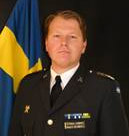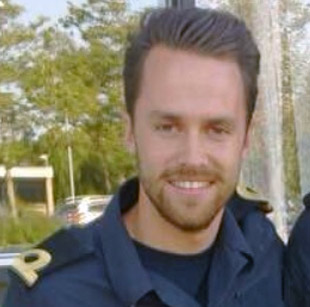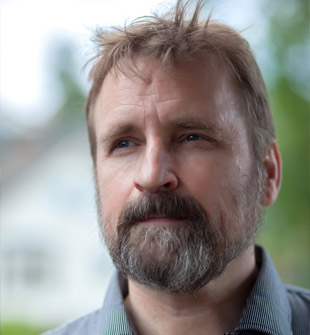Bill Railer
Director MPC Learning Support Centre
Mil Pers Gen / ADL Canada

Learning Without Boundaries - Building an Effective and Practical Digital Learning Strategy
Most organizations’ vision of digital learning solutions starts and ends with a focus on creating learning resources for staff on the corporate LMS. The Canadian Armed Forces organization wanted to go beyond that to implement a strategy that addressed the full range of digital learning in all aspects of people’s work, from organizational development through staff skills and performance support. Intent is to split the presentation into 2 elements to encourage interactivity and new thought.
Marika Kukkasniemi
CEO, Kokoa Standard
Finland

Pedagogy and EdTech
Well-designed digital educational solutions have the power to foster or even transform goal-oriented learning pursuits, but not without good pedagogical design. Therefore, the edtech design process should take into account the research on learning and pedagogy and pursue to implement good practices in order to promote and support learning. This can be achieved by designing solutions which implement a pedagogical model such as the engaging learning model. When choosing an edtech product to be used in learning, it should be necessary to be able to evaluate the implemented pedagogy. This presentation will cover, why it is important to know what kind of pedagogy a digital product represents, and how it can be identified. The presentation will cover the core pedagogical practices and give examples on how edtech products can support efficient learning in different situations.
Anna-Mari Jaatinen
Principal
Helsinki Education, Finland

Anna-Mari Jaatinen, Principal Siltamäki Primary school On Fire!
Leadership Programme, Lead Coach 14 years, school principal 1 year, deputy head 5 years class teacher.
Joyful Learning & Empowering Education
Anna-Mari Jaatinen will share the vision, pedagogical mission and ethos of the real 21st century school culture. Her presentation Joyful Learning & Empowering Education will focus on the leadership, pedagogical developments, project and phenomenon-based education and innovative learning environments at the Siltamäki Primary School, Helsinki, Finland. These elements are based on collaborative & co-creative learning and Design-pedagogy. They reflect the guidelines of the Finnish national core curriculum for basic (primary and lower secondary) education.
The education culture of Siltamäki school is based on The Creative Fire Model. The CFM aims atholistic, child-centered education. The most important elements are the common values, leadership, learning community, creative curriculum & assessment and digitalization. During the years 2010 -2016 the whole Siltamäki school community has created and produced 3 phenomenon-based Magic Forest Musicals. The most exciting learning environment FUSE –studios are based on STEAM –pedagogy. During the presentation you will see dynamic videos:
- FUSE –studios & STEAM –pedagogy
- Minecraft education integrated to curriculum
- “Amazing Race” integrated to role pedagogy
- coding with robots (EU Certificate to school)
- innovation competition
- The new Finnish national core curriculum assessment & digitalization
Tiina Manner
eLearning Specialist
Mediamaisteri Oy, Finland

What encourages the learner to complete eLearning successfully?
What encourages the learner to complete eLearning successfully? Why is your eLearning program completion rate so low? Is it a subtle hint that your eLearning program is boring or going through it seems a waste of time? What should you do?
We will give you some ideas on how to recognize well-designed eLearning and what the minefields are. We go through various methods of how to motivate learners and make eLearning more engaging and interesting. How to ensure that the learner will not only pass the course, but truly learn something? Research supports the fact that learners tend to retain a minimum quantity of what they have learned after weeks of attending an eLearning program. That’s why we will also provide you with some tips on how to support retention.
Paul Jesukiewicz
U.S. Government Civilian Executive/Director USALearning Knowledge Portal
U.S. Office of Personnel Management (OPM), United States

Implementing a Learning Record Store (LRS) in U.S Navy and U.S Government
The Office of Personnel Management’s USALearning program built a government-wide learning record store (USALRS) using Experience API (xAPI). USALRS is providing real-time tracking and recording of all learning activities (formal and informal) from multiple sources to include mobile, virtual worlds, on-the-job training, conference attendance, TED Talks, MOOCs, and games/simulations. Learn about the three primary dashboards that were developed for the individual, Chief Learning Officer, and Head of U.S. Government. Learn how these dashboards are tracking real-time learning activities across the U.S Government. Also learn how USALearning built a LRS for the U.S Navy to improve their tools and methods of tracking Sailor training progression, completions, and assessments.
Dr. Sae Schatz
Advanced Distributed Learning (ADL) Initiative
United States

Is ADL as Good as Regular Education? A Debate!
Increasingly, defence institutions are seeking to convert their traditional, in-resident professional military education courses into distributed—or blended—learning. This transition appears largely driven by financial concerns, since distributed learning courses typically cost much less than in-resident courses. However, many people question whether students receive equally good learning experiences via distributed learning. In this session, we will actively DEBATE the use of distributed learning for military education. Using our experiences with the U.S. defense system and academia, as well as published empirical data, we’ll address questions, such as: Do distributed/blended learning students have similar learning outcomes to their in-resident peers? Can students still develop the social relationships and other “intangible” acculturation outcomes in distributed/blended learning settings? Are students able to truly focus on their studies, if they don’t complete the courses in-residence? Attendees will leave with specific, evidence-based “pro” and “con” arguments that can be applied in their own institutions.
This session promises to be informative, to both pedagogues and applied practitioners—and the debate format should make it an engaging experience for all!
Kalle Huhtala
Lieutenant (Reserve)
Edita Publishing Ltd., Finland

Learning a new language - eLearning for tactical symbols
Military has its own visual language that is used for communicating plans and operations and for marking units on maps and in information and communication systems. Like other means of communication, these military symbols and markings have been standardized to make international co-operation easier. But for someone not familiar with these symbols, they are as informative as Chinese characters. For a reservist army, the need to learn and remember a new "language" is remarkable. Finnish Defence Forces launched an eLearning course in 2007 to support the move from national to international military symbols. The need to learn remains, but many things in the eLearning arena have changed. In this presentation I will discuss the effect of ten years' time on eLearning technology, content design, pedagogical design, production values, work estimates, budgeting, learning analytics and course deployment. Is it possible to reuse & recycle old content in the spirit of sustainability? I will also show practical examples of using modern, HTML5-based off-the-shelf open source and low cost tools such as the Norwegian H5P that make it possible to produce lots of motivating, interactive and gamified drill exercises that are needed when learning any kind of language. There are even location-based tools for learning military symbols outdoors.
Ms. Maria Back-Nilsson
Military academy Karlberg
Sweden

Maria has more than 19 year´s of experience from the Swedish Defense and has previously been acting as a Course Director within the unit´s Logistic courses and has also been a Civilian-Military Instructor at the Swedish Defense International Training Unit (SWEDINT) and have experience from both NATO- and EU-missions abroad.
Co. Speakers:
Magnus Blomqvist Lilliehöök

Magnus is an army major serving in the armed forces since 1995. Originally a Royal Life Guard Dragoon Magnus background is as a military police officer as well as a part of the mounted guard at the Royal Palace. He has also served abroad in Kosovo and Afghanistan. Currently he´s working at the Swedish Armed Forces Headquarters Training and Development staff, main focus on mobilization and readiness issues.
Per Larsson

Per has more than 38 years in the army, whereof approx. 22 years within the logistics branch and has served abroad in missions in Bosnia, Kosovo, Liberia and Afghanistan. Per has also held positions as a logistic specialist at Swedish LCC, with the task of support to the deployed units in the field . He is currently working in the Management Training Unit at the Military Academy Karlberg as Course Director Logistics focusing on extensive logistics on both a strategic and operational level.
Reviving the Military concept of Mobilization of units in the field through Blended Learning
A presentation of the Blended learning concept of Military Mobilization in the Swedish Defense Forces. The concept starts with a basic netbased course taken by all personnel in Swedish Defense Forces, homeguards and voluntary organizations.
The next step in the concept is a netbased course aiming at the commanding officers of the mobilizing armed units in the field. The concept also embraces the view from the logistic side of the process, with classroom training and a field excercise taken by the logistic officers and personnel in charge of their part of the Mobilization process. How to make the classroom training and field exercise in coherence with the netbased basics for this cathegory of the staff in need of training. The presentation will adress the the challenge of recieving the task of developing a completely new Mobilization Training Concept from The Headquarter´s Command, with a rather short timespan to make it happen, along with the absolute need of using the expertise of a drastically shrinking amount of logistic officers having performed these processes during the 1980ies due to retirement and week by week aging out of service... A timespan needed in order to release the traing concept in time for preparing the personnel for the large Swedish Defense Exercise Aurora 17, where the Mobilization process would be put into action. Presenters of the concept; Course Director and Head of the Training Concept Capt Per Larsson, and Ms Maria Back-Nilsson, Project Manager of the netbased parts of the training concept. Both from The Management Training Unit at Military Academy of Karlberg in Solna, Sweden.
Timo Ilomäki, Aki Puustinen, Jukka Sormunen
Teacher, coordinator, 2 principals
FinEduVR - Virtual reality project funded by Finnish national agency of education

Timo Ilomäki, teacher and coordinator of Gradia, Schildt high school; Aki Puustinen, Principal of Muurame high school, Jukka Sormunen, Kuopio Classical high school.
Virtual Reality in Education
Virtual reality in learning project is funded by Finnish national board of education. We want to share our experiences from testing and using virtual reality in education context. We have used virtual reality devices in our project high schools for 2,5 years now. We have HTCvive systems in our schools, also Samsung Gear VRs, Google Cardboards, Drones, PlayStation VRs and new Oculus rift too. In our visual presentation we will show with videos of our student experiences and examples of virtual reality in education. Virtual reality is hot topic now at Finnish education and we would like to tell our story of this virtual reality development project called FinEduVR – virtual reality in Finnish high schools.


Petty Officer (OR5+)
Naval Engineering & Safety Centre, Norway
Many years as instructor in Navy.
CBRN ADL in the Royal Norwegian Navy
Will present how we've used technology (ADL) in our courses, and talk about our experiences creating e-Learning vs buy the service from civilian company. I will also try to encourage the audience to try ADL for a low cost by giving examples from our courses.


Digtial Architect for AR/VR Solutions at MAN Diesel & Turbo
An integrated AR/VR framework for ADL and expert remote support
Live-Demo of AR/VR Solutions for industries including AR/VR training, AR/VR product introduction and Expert Remote Support via head mounted tablets and mobiles.
Elisabeth Rosenbaum
Senior Program Assistant
United States
Enhance active learning in asynchronous courses: Best practices from the United States Institute of Peace
For 30 years, USIP has been a global leader in providing experiential workshops, courses, and trainings for individuals and organizations working in and with conflict affected communities. One of the biggest challenges with any onsite training, however, is that the audiences we hope to reach are oftentimes unable to attend and participate due to cost and scheduling. USIP’s Global Campus has pioneered innovative ways of engaging learners across the world in an online environment. Global campus courses are designed to be experienced in a self-paced format, while at the same time providing scheduled, live, interactive events throughout the year where learners can engage directly with each other, instructors, and guest experts. Each course contains a robust and sequenced collection of synchronous (completed on one’s own time) and asynchronous (live and scheduled) activities designed around a series of short (5 minutes or less) video presentations featuring the course instructor and infused with animations, graphics, and text-based take-aways. The trainings also present learners with virtual scenarios that mirror real-world peacebuilding challenges and asks them to apply what they have learned in the training by making decisions, testing their knowledge, or presenting solutions. This presentation will showcase some of these advancements in asynchronous learning which has impacted tens of thousands of learners worldwide.
Sven Ove Sjølyst
Development Manager (Contractor), Tribridge
Norway

The revolution is here! Target: Learning–systems and -thinking
L&D is challenged to keep up with the current rapid changes in learner needs, technology and thinking. These changes affect how and what we create to support staff, how we make it available to them and how we can use new technology to be agile, i.e to continuously improve and optimize our offering. This presentation will discuss the main trends which is changing learning dramatically and quickly, and discuss how our thinking must change to keep up. Key subjects: • Self-directed learners - changing the way you need to think, key concepts: o Learners as content consumers o Performance support - not training o Resources and guidance - not courses o Social learning and content curation • Focusing on bussiness impact • Learning from marketing - applying online marketing principles in L&D • xAPI - binding it all together - and how it impacts learning systems and strategies.
Martin Hans Jensen
Learning Consultant, Royal Danish Defence College
Denmark

Blended Learning is the future!
The term "Blended Learning" was mentioned for the first time in the late 1990's. The concept becomes more concrete in 2006, in “The Handbook of Blended Learning”, where Blended Learning was defined: “learning systems that combine face-to-face instruction with computer mediated instruction”. More and more educational institutions in Denmark has during the last decade adapted Blended Learning as an important educational method, but is Blended Learning just a buzzword, forgotten in a few years? Or is Blended Learning a step stone to an evolution of the world of education? Spoiler alert! I can’t predict the future, but Blended Learning have some potentials which we obviously still have to pursue in the future. In my session at the Nordic ADL conference, I will like to share some of my experiences with Blended Learning and I hope you would tell about your experiences as well.





